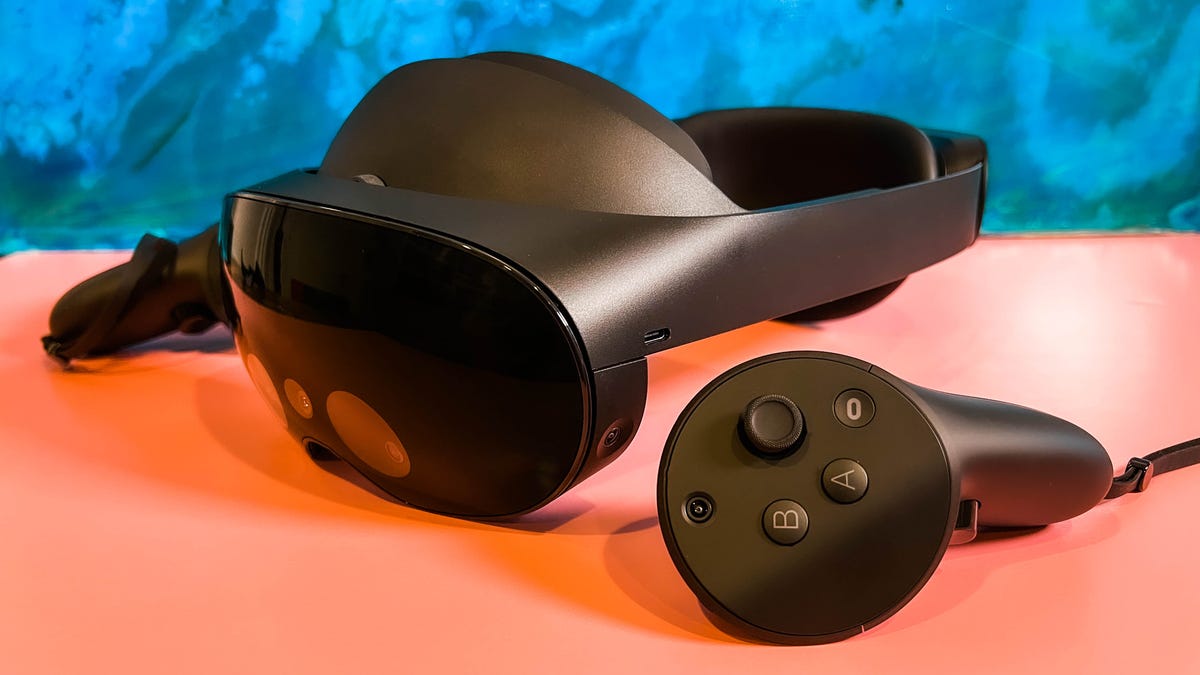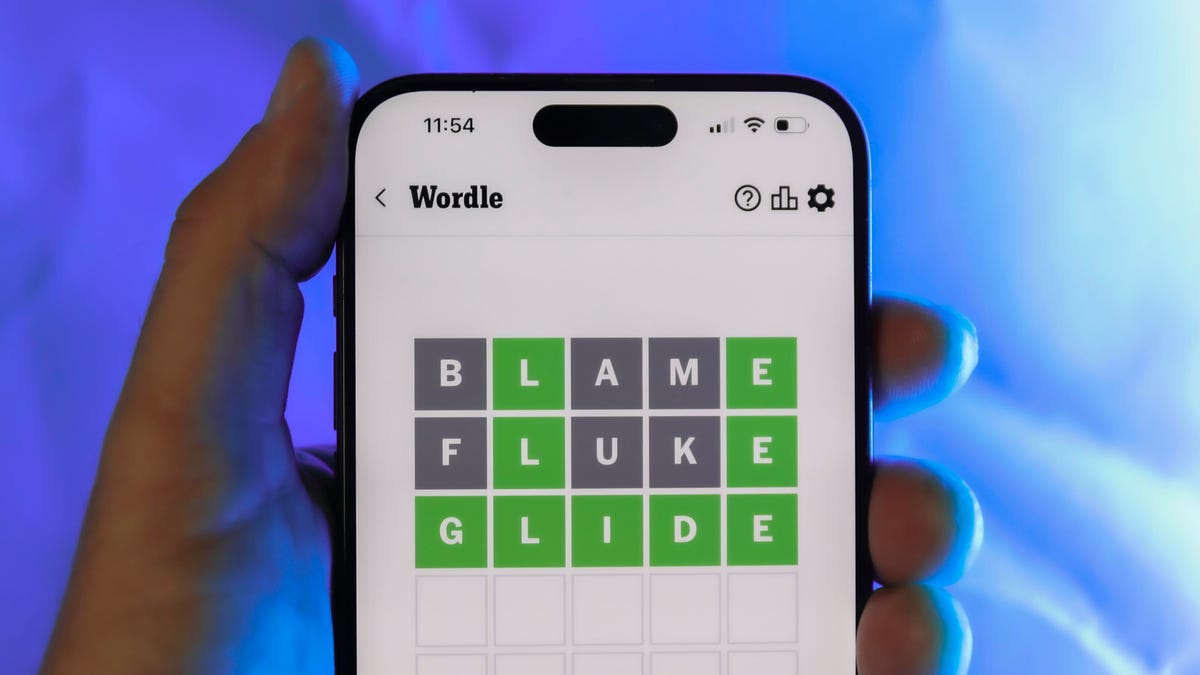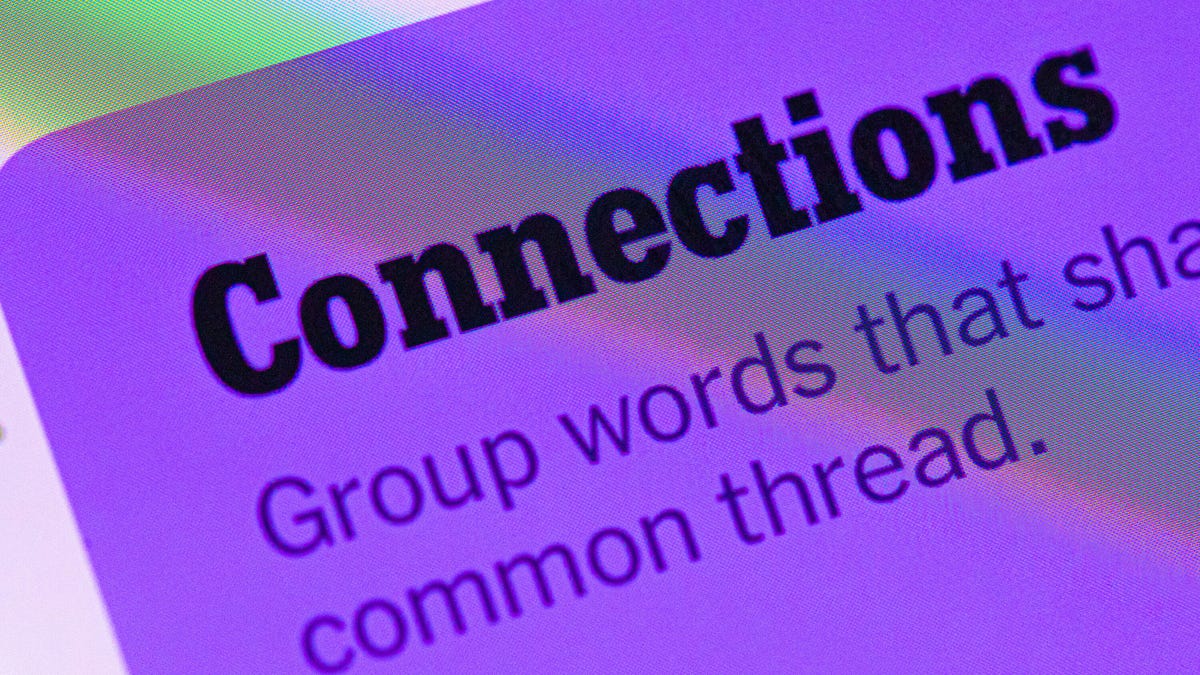Technologies
Meta Quest Pro, Half a Year Later: Caught Between Quest 2 and Quest 3
After I tested the PSVR 2, the Quest Pro seems even more of an enigma, but it may tell us something about the upcoming Quest 3 VR headset.

The Quest 2 headset from Meta succeeded as a self-contained mainstream device for VR gaming. Following that, Meta ambitiously aimed for a lot more with the Quest Pro, a $1,500 headset built around a questionable metaverse strategy. The Pro, already on sale for $500 less than its launch price, felt mistargeted as a pro device, built for a future of work in the metaverse that isn’t here yet… and may never be.
In the almost six months since the Quest Pro came out, the PlayStation VR 2 emerged as another very different headset contender with similarly excellent visuals and eye-tracking. The PlayStation 5-tethered VR headset has absolutely no ambitions at all to be a work device. It just wants to play games in whatever room your PS5 lives in. Meanwhile, Apple is expected to announce its own mixed reality headset in just a few months.
There’s more. The economy has only gotten worse, and Meta’s laid off thousands of people in the last few months. Spending $1,000 on a VR headset is nothing anyone really wants to do, unless it’s somehow able to be some amazing device that can deliver lots of uses all in one. Meta is trying to make the Quest platform that multiuse thing, but it’s still best at one genre: gaming.
However, there are threads to the future. VR headsets can be amazing workout devices. Social experiences in VR can be impressive, transporting and meaningful. Already on hand are 3D art tools and simulation tools that elevate VR to incredibly professional uses. You can cast multiple monitors from your computer and use your VR headset as your magic desktop, but your patience and mileage for that may seriously vary.
The eye-tracking, face-tracking Quest Pro, packing an impressively high-res display, seems like an evolutionary step toward whatever smaller glasses-like things come later. And with software and bridges to computers and phones that will be far more refined. Meta wasn’t wrong with the Quest Pro, in theory, but it was way too early.
Read more: Working on the Quest Pro
By all means, don’t get the Quest Pro. The Meta Quest 3 is expected by the end of this year, and it could very well have a better processor and many of the same features at (perhaps) a lower price. Also, if you’re curious about expensive, bleeding-edge, possibly work-oriented VR devices, Apple’s expected to have its own contender in 2023, too. HTC’s even smaller Vive XR Elite is more portable, and although it doesn’t work with my glasses, it could maybe be a more practically sized travel headset for some. And if you’re looking to elevate your VR gaming beyond the Quest 2, the PlayStation VR 2 is your best bet for its promising graphics and features, even if it is tethered by a cable.
But I’ve started using the Quest Pro more recently, and some things still really stand out.
Wow, the display, and even the audio
The PlayStation VR 2 has a richer and brighter HDR OLED display, but the Quest Pro has the crispest and clearest display of nearly any VR headset I’ve ever used. Meta’s shrunken-down lens system, called pancake optics, combined with a bright LCD display ends up making a notable difference over the Quest 2. I’m appreciating once again how clear text looks, how vivid games appear and how simply clear it all is. It’s not perfect, but if price was no object this would be the ideal display for everyday use. The lenses don’t have any ribbed lines, either, unlike the PlayStation VR 2’s Fresnel lenses and several other VR headsets. I appreciate that it fits over my glasses, as always, even though the headset fit isn’t as loose and forgiving as that of the PSVR 2.
I also appreciate the audio, surprisingly. After using the PSVR 2’s earbuds, which have to be inserted every time, I’m enjoying all over again how Meta’s headsets just project sound from the headbands with no separate headphones needed at all. The Quest Pro’s audio sounds better than the PSVR 2’s earbuds, to my ears, even though the audio is open air and I can hear everything else in the room too. Its blend of VR sound and the everyday world feels like the sort of challenge future AR glasses and mixed reality headsets are going to have to solve, and Meta’s one of the few doing it as well as it can be done right now.


I moved around a lot with the Quest Pro in a demo last fall. It’s much easier to be mobile in it than on something tethered.
MetaIt’s refreshingly relaxed and wireless
Slipping the headset on over my eyes has always felt like putting on a pair of magic lenses. I think of this, the way they rest over my glasses, the way I can casually walk around the room playing Walkabout Mini Golf and not feel worried about bumping into anything. I appreciate the heightened room awareness, partly because I can see the room around the sides of the headset. Also, with its smaller controllers and naturally wireless self-contained design, I just enjoy slipping into it.
It’s also bulky
At the same time, wow, the Quest Pro is awkwardly shaped. It’s big and has a large headband, and needs its own special charger dock to charge up its headset and the controllers. It just feels like a delicate sports car you need to put back carefully in the garage every time. That’s unlike the Quest 2, which is smaller overall despite its larger front, can be tucked more easily into a carrying case, and doesn’t have the same glossy visor design. Also, because I need to charge the Pro every time I use it, it also seems more complicated to store than the also-large (but light) PSVR 2, which can simply be tucked on a shelf.


The Quest Pro (left) is smaller in some ways than the Quest 2 (right). But that stiff headband makes it hard to pack down into a bag.
Scott Stein/CNETMeta never advanced the software enough
The Quest Pro really is just a Quest in terms of apps and OS, so much so that you may wonder why it’s even needed as an upgrade. Backward compatibility is a great thing, but there was an opportunity here to rethink the interface, push mixed reality more and create a truly new class of apps. There are Quest Pro-optimized apps that use the color passthrough cameras and mixed reality features (and eye and face tracking) to different effects, but most of these extras feel tacked on, not quite necessary, gimmicky.
Eye and face tracking aren’t integral to Meta right now, which may be a huge relief to those seeing these sensors as doorways to a whole unsettling level of observational data collecting or more targeted advertising. But that also means the way these technologies are used doesn’t feel necessary, either, unless you’re an aspiring Quest developer who wants to make eye and face tracking apps. When I’ve tried eye and face tracking to animate my avatars, it’s had mixed results, and it sometimes made my virtual self look weirder. Meta can already use AI to help animate avatars based on voice cues, and those work well enough.
The PSVR 2, by comparison, uses its unique features more fully. Eye tracking is already used extensively in many launch games for foveated rendering that improves graphics results, and some games use eye tracking for controls, too.
There’s also a big gap between the phones we use and the VR/AR headsets of the moment. Qualcomm is trying to bridge this gap, and Apple, Google and Samsung will likely try to do the same. Meta has its own phone app that works with the Quest 2 and Quest Pro, but it’s not been rethought for Pro users at all. I don’t feel like I can output my VR work any more easily or intuitively, and I don’t feel like I can use apps or software I rely on all the time in easy, logical ways on the Quest Pro. When will it feel like a true extension of my laptop or my phone? I don’t know.
Meta did add an experimental hand tracking feature called Direct Touch that allows for your fingers to «press» buttons by pressing them in-air, or to press keys on hovering virtual keyboards. This more direct interaction mimics what Microsoft has already done on the HoloLens 2. Still, it’s not reliable enough to use for actual writing, and still feels a little awkward. The Quest Pro is still, mostly, best used with the controllers.
There are plenty of creative and work tools on the Quest Pro, but nearly all of these are things you can also use on the Quest 2, minus those eye tracking and better-looking mixed reality options.
The Quest 3 should get many of the Quest Pro’s features
Expect Meta’s next headset to adopt many of the Quest Pro’s best qualities: the color passthrough cameras and mixed reality capabilities, the smaller lens system and crisper visuals, and on top of that, likely a faster, better processor. The Quest 3 may not have eye tracking, but you probably won’t need that, anyway. It may also come with controllers similar to the Pro’s, or at least work with them. (I like how the Pro controllers are smaller, but I also don’t like how they need more frequent charging.)
The Quest 3 is expected to cost somewhere around $500, and if that’s true, it’ll be half the price of the Quest Pro. Even though I appreciate the Pro’s high-quality visuals and fit, there’s absolutely no reason you should buy one, even at its currently lower but still expensive $1,000 price.
The future is not just about VR: it’s about smaller glasses-like devices that will eventually be wearable all day, and in the meantime will work as mixed reality goggles at home. Meta’s hardware is moving on that path, but in early 2023, VR is still largely for gaming, and the Quest Pro is not a headset made for gamers, and that should tell you all you need to know.
Technologies
Apple Crowns Its Top Apps of 2025, and AI Dominates the Field
Tiimo, a visual planner for people with ADHD that uses AI, won the App of the Year award.

Apple named the 17 winners of its 2025 App Store Awards on Thursday, and AI made its presence felt. App of the Year Tiimo, created for folks with ADHD, is an AI visual planner; iPad App of the Year Detail uses AI to simplify video editing; and Mac App of the Year Essayist employs AI to ease «the time-consuming work of formatting academic papers.»
Apple began giving out App Store Awards over a decade ago, with recent App of the Year winners including Kino (2024), AllTrails (2023), BeReal (2022), Toca Life World (2021) and Wakeout! (2020).
Don’t miss any of our unbiased tech content and lab-based reviews. Add CNET as a preferred Google source.
It’s apparent from this year’s selections that the AI juggernaut will continue growing in global influence. The Business of Apps, a B2B media and information platform, estimates that the AI app sector generated $4.5 billion in 2024 — more than half of that via ChatGPT — and that nearly 700 million people used AI apps in the first half of 2025. The website predicts that the AI app sector will exceed $150 billion in revenue by 2030.
(Disclosure: Ziff Davis, CNET’s parent company, in April filed a lawsuit against OpenAI, alleging it infringed Ziff Davis copyrights in training and operating its AI systems.)
«Every year, we’re inspired by the ways developers turn their best ideas into innovative experiences that enrich people’s lives,» said Tim Cook, Apple’s CEO. «This year’s winners represent the creativity and excellence that define the App Store, and they demonstrate the meaningful impact that world-class apps and games have on people everywhere.»
‘For brains that work differently’
Tiimo is based in Copenhagen and was co-founded by Helene Lassen Nørlem and Melissa Würtz Azari to create planning tools for individuals with Autism, ADHD, neurodivergence and executive functioning differences. The company website says its app’s tools «are adaptive by design; visual, flexible, and grounded in how neurodivergent people really plan, think, and follow through,» and notes that the app is «for brains that work differently.»
The app originated as a research project exploring how tech could support neurodivergent teens, but Würtz Azaritransformed that into a business after being diagnosed with ADHD and dyslexia, according to the company.
Tiimo’s App of the Year honor comes a year after the app was named a finalist in the 2024 Apple Design Awards in the inclusivity category.
Würtz Azari said Tiimu succeeds because its developers «challenge that status quo» of how apps typically present calendars, to-do lists and focus tools. We «integrate focus timers into tasks, add small celebratory cues, and build subtle improvements that make it easier to stay organized,» she said.
Tackling the citations beast
Anyone who has done a research paper or term paper knows how incredibly annoying and time-consuming it is to do citations.
Essayist, the Mac App of the Year, utilizes AI to «insert citations seamlessly,» for APA, MLA, Chicago/Turabian and Harvard citation styles. The app also eases the processes of adding references and formatting papers.
Video editing made AI easy
The Detail app, which Apple named iPad App of the Year, says its app can «turn podcasts, reactions and presentations into ready to share content in seconds.»
Detail says its Auto Edit feature can perform «silence removal, zoom cuts, titles, captions, music and more.»
Detail also says that its Podcast Auto Edit tool can «generate multiple long-form edits and short clips for social in a tap – —utomatically switch speakers and save hours of editing.»
The complete list of winners
As chosen from the previously announced finalists, here are the 17 winners of Apple’s 2025 App Store Awards:
iPhone App of the Year: Tiimo
iPhone Game of the Year: Pokémon TCG Pocket
iPad App of the Year: Detail
iPad Game of the Year: DREDGE
Mac App of the Year: Essayist
Mac Game of the Year: Cyberpunk 2077: Ultimate Edition
Apple Vision Pro App of the Year: Explore POV
Apple Vision Pro Game of the Year: Porta Nubi
Apple Watch App of the Year: Strava
Apple TV App of the Year: HBO Max
Apple Arcade Game of the Year: WHAT THE CLASH?
Cultural Impact Winners: Art of Fauna, Chants of Sennaar, despelote, Be My Eyes, Focus Friend, and StoryGraph
Technologies
Today’s Wordle Hints, Answer and Help for Dec. 5, #1630
Here are hints and the answer for today’s Wordle for Dec. 5, No. 1,630.

Looking for the most recent Wordle answer? Click here for today’s Wordle hints, as well as our daily answers and hints for The New York Times Mini Crossword, Connections, Connections: Sports Edition and Strands puzzles.
Today’s Wordle puzzle is a little tricky, though the letters aren’t super unusual. If you need a new starter word, check out our list of which letters show up the most in English words. If you need hints and the answer, read on.
Today’s Wordle hints
Before we show you today’s Wordle answer, we’ll give you some hints. If you don’t want a spoiler, look away now.
Wordle hint No. 1: Repeats
Today’s Wordle answer has no repeated letters.
Wordle hint No. 2: Vowels
Today’s Wordle answer has two vowels.
Wordle hint No. 3: First letter
Today’s Wordle answer begins with A.
Wordle hint No. 4: Last letter
Today’s Wordle answer ends with G.
Wordle hint No. 5: Meaning
Today’s Wordle answer can refer to being with or surrounded by people. It’s also the first word in a popular computer game where someone is an imposter.
TODAY’S WORDLE ANSWER
Today’s Wordle answer is AMONG
Yesterday’s Wordle answer
Yesterday’s Wordle answer, Dec. 4, No. 1629 was TULIP.
Recent Wordle answers
Nov. 30, No. 1625: MUGGY
Dec. 1, No. 1626: LEACH
Dec. 2, No. 1627: CACTI
Dec. 3, No. 1628: HASTE
Don’t miss any of our unbiased tech content and lab-based reviews. Add CNET as a preferred Google source.
Technologies
Today’s NYT Connections Hints, Answers and Help for Dec. 5, #908
Here are some hints and the answers for the NYT Connections puzzle for Dec. 5, No. 908.

Looking for the most recent Connections answers? Click here for today’s Connections hints, as well as our daily answers and hints for The New York Times Mini Crossword, Wordle, Connections: Sports Edition and Strands puzzles.
Today’s NYT Connections puzzle is a little easier than usual, I thought. I spotted the blue group connection right away. If you need help solving it, you’re in the right place. Read on for clues and today’s Connections answers.
The Times now has a Connections Bot, like the one for Wordle. Go there after you play to receive a numeric score and to have the program analyze your answers. Players who are registered with the Times Games section can now nerd out by following their progress, including the number of puzzles completed, win rate, number of times they nabbed a perfect score and their win streak.
Read more: Hints, Tips and Strategies to Help You Win at NYT Connections Every Time
Hints for today’s Connections groups
Here are four hints for the groupings in today’s Connections puzzle, ranked from the easiest yellow group to the tough (and sometimes bizarre) purple group.
Yellow group hint: Not easy.
Green group hint: How things are.
Blue group hint: Monopoly is another one.
Purple group hint: Gab.
Answers for today’s Connections groups
Yellow group: Tricky.
Green group: State of affairs.
Blue group: Classic board games.
Purple group: ____ talk.
Read more: Wordle Cheat Sheet: Here Are the Most Popular Letters Used in English Words
What are today’s Connections answers?
The yellow words in today’s Connections
The theme is tricky. The four answers are complex, delicate, sticky and tough.
The green words in today’s Connections
The theme is state of affairs. The four answers are deal, situation, status and story.
The blue words in today’s Connections
The theme is classic board games. The four answers are Mastermind, Mouse Trap, Operation and Sorry.
The purple words in today’s Connections
The theme is ____ talk. The four answers are baby, pillow, small and sweet.
Don’t miss any of our unbiased tech content and lab-based reviews. Add CNET as a preferred Google source.
-

 Technologies3 года ago
Technologies3 года agoTech Companies Need to Be Held Accountable for Security, Experts Say
-

 Technologies3 года ago
Technologies3 года agoBest Handheld Game Console in 2023
-

 Technologies3 года ago
Technologies3 года agoTighten Up Your VR Game With the Best Head Straps for Quest 2
-

 Technologies4 года ago
Technologies4 года agoBlack Friday 2021: The best deals on TVs, headphones, kitchenware, and more
-

 Technologies4 года ago
Technologies4 года agoVerum, Wickr and Threema: next generation secured messengers
-

 Technologies4 года ago
Technologies4 года agoGoogle to require vaccinations as Silicon Valley rethinks return-to-office policies
-

 Technologies4 года ago
Technologies4 года agoOlivia Harlan Dekker for Verum Messenger
-

 Technologies4 года ago
Technologies4 года agoiPhone 13 event: How to watch Apple’s big announcement tomorrow

